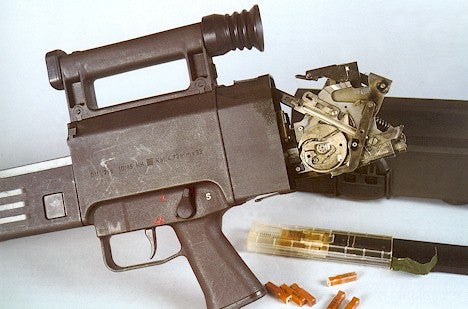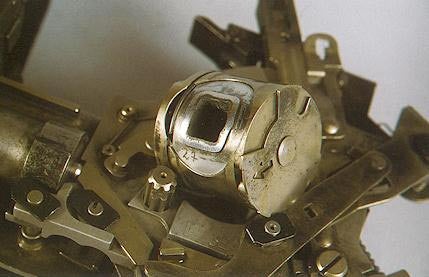5.56mm is adequate for anti-personnel use at short to medium ranges. The reasons it's favored over the 7.62mm round is because it's lighter and smaller and the troops can carry more of it. This is it's ONLY real advantage over a larger caliber, as it's ballistically inferior for everything but groundhog hunting.
Well, that's only one advantage to using the smaller round in combat.
You forget that the entire purpose of an "assault rifle" is its ability to provide controllable full-auto fire to the soldier. A full-auto M14 or even FAL isn't nearly as useful as a full-auto M16 to its user.
The M14's over heated and were wildly uncontrollable by the average soldier. While the FALs design was superior to that of the M14 for full-auto fire, it too was for the most part uncontrollable to the average soldier and were therefore issued in semi-auto only by many nations.
The G11 had a progressive recoil system that allowed it to get off 3 shots in rapid succession before the recoil impulse would upset the aim of the shooter. The whole upper assembly moved rearward during firing (burst mode) allowing the portion being held by the shooter to remain rigid. Attempting to do this with a 7.62x51 chambered weapon would be nearly impossible as the size and weight of the rifle would be prohibitive.
To assist in controlled bursts, the G11 had several things going for it;
1) The 4.73mm bullet was small, light and fast. The smaller the bullet, the less recoil generated.
2) The 'bolt' (I use the term loosely) reciprocated in a circular motion thereby absorbing much of the recoil energy through simple mechanics.
3) A high cyclic rate, 3 round in about 60 milliseconds.
4) A unique recoil absorption system which allowed all 3 shots to be fired before the recoil impulse would be transferred to the shooter.
Here's a shot of the rotating chamber:
Again, not exactly a simple design. It's been compared (rightfully so I might add) to a 'Swiss watch' as it has countless tiny and intricate parts that need to be in exact alignment for it to properly function. It was going to be extremely expensive to mass produce, and this was one of the reasons the project was dropped.
It was a 1st generation attempt at a very good idea. Caseless ammo weapons make perfect sense for a number of reasons, but here are two primary reasons;
1) Caseless ammo reduces the cost of ownership and usage since brass (or steel) is no longer needed.
2) Since no brass (or steel) is ejected, the 'left hand' vs. 'right hand' shooter is no longer an issue - especially with a 'bull-pup' design.
I suspect caseless ammo isn't a dead concept. While there are some problems with current caseless cartridge designs (such as durability), I'm sure the technology will continue to improve over time. Eventually a system may emerge as a viable option for military usage. Unfortunately the G11 wasn't that solution although it was an incredible first step and exceptionally innovative design.
Tim








